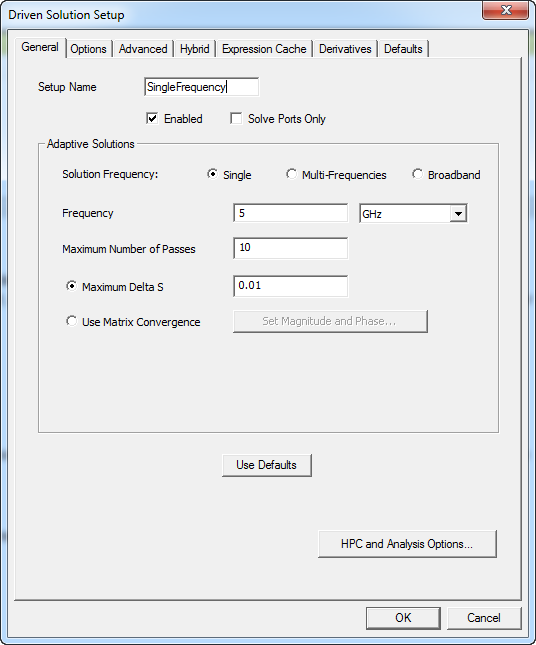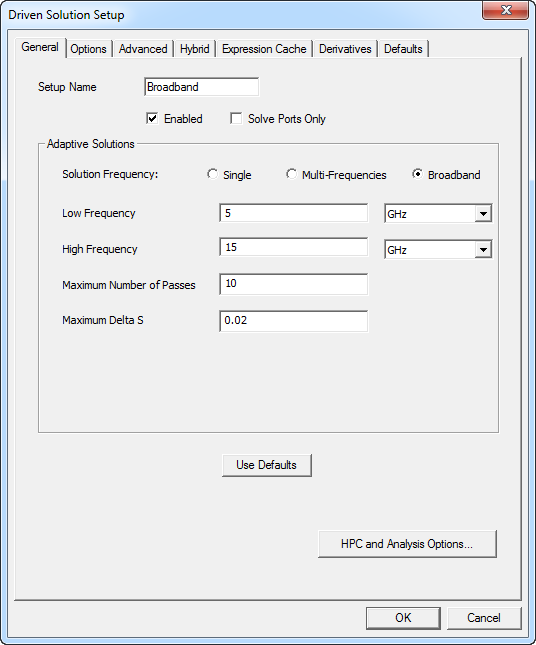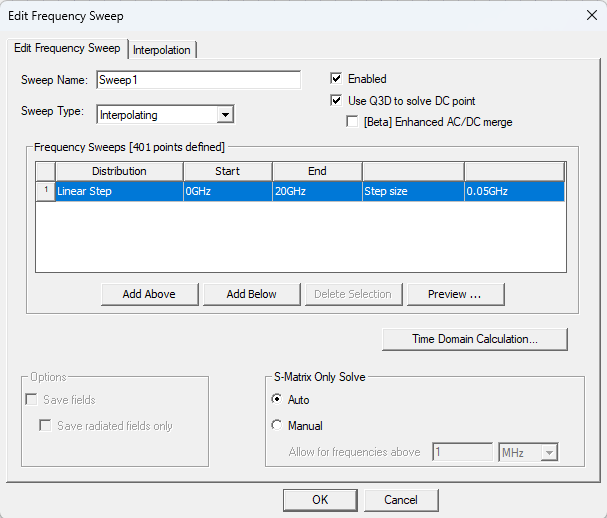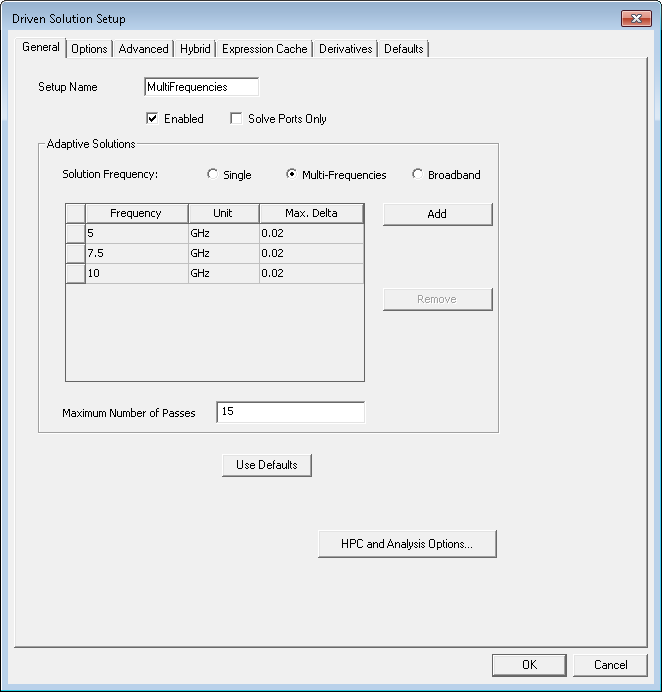Adaptive Meshing Methods In HFSS
The adaptive mesh refinement feature in HFSS automatically generates accurate and reliable solutions and lets you focus on setting up your design efficiently instead of spending time in determining and creating the best mesh. The Solution Frequency setup offers the flexibility of adapting the mesh at various frequencies for your design. HFSS offers three Solution Frequency setups for generating adapted meshes:
- Single
- Broadband
- Multi-Frequencies.
The Single Solution Frequency setup is applicable for all solution types. Broadband and Multi-Frequencies are applicable for modal and terminal solutions only.
Based on the solution frequency setup and the convergence criteria HFSS automatically creates a suitable mesh for your design and generates accurate solutions. Once the final mesh is generated, HFSS also creates a solution across a frequency range of interest provided you defined a frequency sweep.
Single Solution Frequency
If you define the Single frequency setup HFSS performs adaptive mesh refinement at that frequency for your design until the convergence criterion is satisfied. The most common convergence criterion is determined by the difference in the S-parameter value between two consecutive solves known as Maximum Delta S, which should be less than the specified magnitude. Once the solution converges, the final mesh is used to evaluate the electromagnetic characteristics of the design. If you define a frequency sweep, solution data is generated across this range of frequencies.
To specify the Single Solution Frequency setup, perform these steps:
- Right-click Analysis in the project tree and select Add Solution Setup.
- Select Single as the Solution Frequency.
- Specify the Maximum Number of Passes and the Maximum Delta S.

Broadband Frequency
For most problems, specifying the Single solution frequency setup is adequate to obtain accurate results. If you desire increased reliability for broadband devices and more accurate solutions, you can specify the Broadband option for the Solution Frequency setup. The Broadband setup enables HFSS to intelligently determine the appropriate frequencies at which to adapt the mesh. The virtue of automatic broadband adaptive meshing lies in eliminating uncertainty in choosing the best frequency for adapting the mesh. You need only specify the highest and lowest frequencies of the range and HFSS determines the frequencies at which to adapt the mesh. The mesh is always adapted for a minimum of three frequencies within the specified frequency range. Adaptive meshing at additional frequencies require enabling the high performance computing (HPC) feature and availability of sufficient computational resources.
The adaptive mesh refinement process occurs at various frequencies within the specified frequency range until the convergence criterion is met. In this case, the values of Maximum Delta S between consecutive solves are calculated for each frequency. The weighted average of Maximum Delta S across all frequencies must be below the specified magnitude of Maximum Delta S for the simulation to converge. You also have the option to set Maximum Number of Passes as the stopping criterion.
For Broadband adapt, HFSS prompts you with an interpolation sweep predefined by a range of frequencies identical to the Broadband frequency range. In addition, the algorithm chooses the adapt frequencies in a way that they can also be reused in the frequency sweep. This increases the efficiency of the solution process.
Broadband frequency setup does not allow viewing the fields for the adapted frequencies. You can define a discrete sweep including the adapt frequencies and solution data will be provided without re-solving.

To specify the broadband frequency option, perform these steps:
- Right-click Analysis in the project tree and select Add Solution Setup.
- Select Broadband as the Solution Frequency.
- Specify values for Low Frequency and High Frequency.
-
Specify the convergence criteria that include Maximum Number of Passes and the Maximum Delta S and click OK.
The Edit Frequency Sweep window appears automatically. The interpolating sweep is automatically populated with Start and End values, which are identical to the low and high frequency values of the broadband frequency range specified in the solution setup window.

Multi-Frequencies
If you know apriori the frequencies at which to adapt the mesh for your design, you can specify the Multi-Frequencies setup. You can specify a number of individual frequencies in this setup and adaptive meshing occurs at all the frequencies.
You have the option to set different values of Maximum Delta S for the specified frequencies. For each frequency the individual target Delta S value must be reached in order for the entire solution to converge. For instance, if you define 4 frequencies for adapting the mesh, the target value of Maximum Delta S for each of the 4 frequencies must be satisfied for the solution to reach convergence.
To specify individual frequencies in the Multi-Frequencies setup, perform these steps:
- Right-click Analysis in the project tree and select Add Solution Setup.
- Select Multi-Frequencies.
- Edit the existing frequency field to a value of your choosing.
To enter additional frequency points, use Add and edit the corresponding value in the Frequency column.

